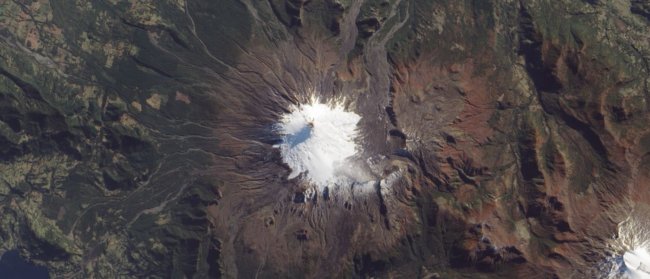
Scientists have long wondered about how the atmosphere of our planet could be filled with oxygen. And it seems that two researchers, a geologist matthis Smith of the University of British Columbia and his colleague Klaus Mezger, found the answer in a continental breed, an age of several billion years.
“Oxygenation was just waiting for the right moment. Required several factors to make it happen,” says Smith.
In the atmosphere and oceans of the early Earth lacked free oxygen, despite the fact that the tiny cyanobacteria produce gas as a byproduct of photosynthesis. Free oxygen is the oxygen, mixed with other chemical elements like carbon and nitrogen. For life in a free oxygen needed by aerobic organisms. About three billion years ago, a change occurred in some regions of the oceans began to accumulate free oxygen. About 2.4 billion years ago, only some 200 million years, the level of oxygen in the atmosphere suddenly increased 10 000 times. This period in Earth’s history in science is called the oxygen catastrophe (or the oxygen revolution), completely changed the chemical reactions occurring on the surface of our planet.
Smith and his colleague Klaus Mezger from the Department of Earth Sciences, oceans and atmosphere of the University of Berne (Switzerland) are convinced that in this period there is a continental and global changes. Scientists decided to find a connection between these events and engaged in-depth study of the records on the geochemical composition of shale and igneous rocks around the world. In total, the scientists analyzed more than 48,000 different stones, whose age is a few billion years.
“It turns out that at the moment when the oceans began to accumulate free oxygen, there was a significant continental changes,” Smith said.
Before oxidation (oxygen catastrophe) composition of the continents were rich in species with a high content of magnesium and low silica content, similar to what today can be found in places like Iceland or Faroe Islands. But more importantly, is the fact that this rock contained a mineral called olivine. When the olivine comes into contact with water, it triggers chemical reactions that lead to blockage of oxygen. This is what likely happened with oxygen, the production of which in the early history of the Earth were engaged in cyanobacteria.
But as the crust continued to grow and move closer to that condition, which can be seen in her now, olivine eventually disappeared. Without this mineral, initiating the interaction with the water and consume oxygen, the gas was finally able to accumulate. In the end, the oceans they perenasytil and began to give it to the atmosphere.
“It’s likely, and is the starting point for the emergence of the diversity of life that is rich in our planet. After these changes, the Land became more inhabitable and suitable for the development of complex life forms. This required a trigger mechanism. And I think we found him,” says Smith.
As for what could cause such a significant change in the chemical composition of rocks of the continents, the issue remains open for further research. Smith notes that modern plate tectonics began about the same time, many scientists suggest that this question also has some connection.
The findings of Smith and Mezger was published in the latest issue of the journal Nature Geoscience.
Scientists seem to have found a “trigger” that started the development of complex life forms on Earth
Nikolai Khizhnyak